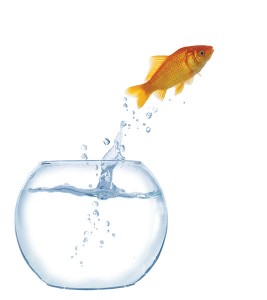How to minimize the dreaded ‘double tax’ when you sell your pest control C corp.

Sellers have devised a creative way to minimize the impact of the corporate level tax by separating personal goodwill of owners from buisness goodwill of the corporation.
You’ve worked hard over the years building your business, and now it’s time to harvest the fruits of your labors. When you started, your attorney likely advised you that a company that applies pesticides, offers damage guarantees and has vehicles on the road driven by employees creates potential personal liabilities best avoided by forming a corporation to protect your personal assets from the risks of the business.
Many attorneys who organize corporations do so as a C corporation, because they might not be versed in the tax strategies of an S corporation — or the S election might not be appropriate for certain companies. Unfortunately, C corporation profits are taxed once at the corporate level and again when distributed to the shareholders — the dreaded double tax. We assume that throughout the years, you’ve been able to avoid the double tax problem by giving salary increases to the shareholders, renting buildings or equipment from them, and generally using the standard strategies that most C corporation owners use to eliminate any corporate taxable income by year end.
So what happens when you decide to sell your business, and the C corporation makes a windfall taxable gain as a result? The purchaser will likely want to structure the deal as an asset sale, because almost all business sales in the professional pest management industry are structured this way. For the most part, purchasers are only looking to buy a customer list, avoid any unknown liabilities and write off the purchase price paid for the business for
tax purposes.
There are two common methods to eliminate the double tax in this situation:
1. Sell the shares of stock of the
C corporation to the buyer, instead of the C corporation selling its assets to buyer.
2. Make an S corporation election and wait 10 years (recent tax law changes shortened this to five years) to sell your business to avoid the 35 percent built-in gain tax imposed on converting C corporations who fail to wait the full nonrecognition period before selling the business.
The first method sounds easy enough, but a seller will soon learn most buyers want to buy assets and get more favorable tax benefits. Additionally, in an asset purchase deal, liabilities stay with the seller, and the buyer takes the business assets free and clear of potential unknown or contingent liabilities as mentioned above.
As for the second method, waiting five or 10 years to avoid the double tax problem is an inordinate amount of time, and therefore impractical for a seller who needs or wants to sell within the next few years.
The sale of personal goodwill
Sellers faced with unacceptable alternatives have devised a creative way to minimize the impact of the corporate level tax by separating personal goodwill of the seller’s owners from the business goodwill of the corporation itself. Selling a shareholder’s personal goodwill is tax-efficient because it provides the buyer with the tax benefits he seeks while the selling shareholder only pays the lower personal capital gains tax on the personal goodwill sold, thereby avoiding the dreaded double tax for that portion of the sale. The two seminal cases that approved this approach were Martin Ice Cream Co. v. Commissioner, 110 TC 189 (1998), and Norwalk v. Commissioner, 76 TCM 208 (1998).

Purchasers are only looking to buy a customer list, avoid unknown liabilities and write off the purchase price paid for the business for tax purposes.
In the Martin Ice Cream case, a father and son disagreed about an ice cream distribution business that was owned by a C corporation with them as shareholders. To settle the dispute, the father and son caused the C corporation to transfer a division of the operation to the father in exchange for his shares. The transaction was intended to be a tax-free spinoff, avoiding the dreaded double tax, but failed when challenged by the Internal Revenue Service (IRS). A corporate-level tax was imposed on the value of the business (including goodwill) distributed to the father.
The two challenged the IRS in Tax Court and were able to convince the court a portion of the corporate assets being valued was personal goodwill of the father, not business goodwill owned by the C corporation, thereby reducing what would amount to the dreaded double tax.
Similarly, in Norwalk, the IRS asserted that the corporation (an accounting firm) had business goodwill. Upon liquidation, the agency taxed the value of this asset at the corporate level, again creating the dreaded double tax. As in the aforementioned case, the shareholders sued the IRS in Tax Court, which found the client relationships belonged to the shareholders in their individual capacity, thereby making it personal goodwill and not business goodwill owned by the C corporation.
Goodwill toward all
What is goodwill, and why does it make a difference in the aforementioned situations? Goodwill is an intangible asset that can be purchased as part and parcel of a business sale. It’s commonly recognized as a trade name, an assembled workforce, and the customer relationships created over time, both with the company and with management or ownership.
If the goodwill belongs to the owner individually, a purchaser can purchase that goodwill from him with any tax consequences (capital gains) paid by the selling individual (a single tax). If the goodwill belongs to the corporation, it must be purchased from the corporate seller subject to tax at the corporate level, if a C corporation or in the built-in gain waiting period of a C corporation making an S election. When the corporation is liquidated, there is an additional tax at the shareholder level — the dreaded double tax. If the goodwill belongs to the individual, the double tax can be avoided upon sale. (See “Personal or business?” sidebar below.)
The view from the IRS
The IRS scrutinizes these types of transactions and can and will challenge them if there’s little or no proper documentation detailing the business vs. the personal goodwill. If the IRS determines the personal goodwill was a last-minute strategy to reduce the tax liability, the transaction will be denied.
Since 2008, there have been several cases in which taxpayers unsuccessfully attempted to apply the Martin Ice Cream concepts and lost, primarily because of lack of preparation and documentation. However, the Martin Ice Cream concept is still a viable strategy as long as taxpayers take care to:
- Get professional appraisal(s) that value the company assets and support the personal goodwill allocation.
- Properly document the strategy from the beginning, rather than be a simple afterthought.
- Be careful the facts support the intended strategy in terms of distinguishing the types of characteristics.
- Ensure the seller doesn’t have a noncompete agreement in place with the corporation.
Although a significant challenge risk exists when adopting the sale of personal goodwill, case law still supports technique as long as the taxpayer does his homework to stay away, if possible, from the mistakes and bad facts outlined in the recent cases where taxpayers were defeated. So if you’re considering selling your business, and you’re in a situation in which double taxes apply and you want to explore the above strategy, work with an accountant or attorney who completely understands the concept.
Personal or Business?
How does one differentiate personal goodwill vs. business goodwill if they seem to be intertwined? The following partial listing of certain identifiable characteristics highlight part of the analysis a taxpayer needs to undertake to make any conclusion whether the Martin Ice Cream case is helpful establishing that a business owner has significant goodwill personally owned, rather than a business asset of a C corporation.
Personal goodwill (sample characteristics)
✓ More common in companies with higher portion of intangible assets
✓ No noncompete agreement exists between the selling shareholder and the corporation
✓ Business is dependent on owners’ personal relationships, reputation, skills and know-how
✓ Owner’s service is important to sales.
✓ Owners are involved with the business operations
✓ Loss of owner would have a negative effect on revenues/profits
Business goodwill (sample characteristics)
✓ Non-compete agreements
✓ Larger business with formal organizational structure, processes and controls
✓ Sales are generated from company
brand name recognition and the company sales team.
✓ Manufacturing businesses or companies that are asset intensive
✓ Selling shareholder isn’t intimately involved with the business
✓ Loss of owners wouldn’t have a material impact on revenues/profits
Time to Sell? 7 Questions to Ask Yourself
Every pest management company owner should answer these questions to determine whether it’s time to sell their business.
When trying to decide if it’s time to sell your pest management business, soul searching blended with logic and awareness of financial aspects will help you assess your situation and make things clearer.
Let’s use the example of a pest management business (S Corp for tax purposes) generating $1.5 million in annual revenues with about 10 percent of such amount ($150,000) allocated to the business owner in salary and perks each year. A one-time annual revenue rule of thumb values the company at about $1.5 million. Also assume there are $100,000 in liabilities outstanding at the time of sale. This would leave the owner with about $1.4 million before taxes and $950,000 after tax assuming a blended federal and state rate of 30 percent (using federal LTCG rate of 23.9 percent and a state tax rate of 6 percent).
The following questions might help you decide what to do:
1. How old are you, and given your health, how many more years do you want or need to work in the business given responsibilities to yourself and your family?
2. Is your business still in an expansion mode or is it a mature and declining business because of increased competition, loss of key employees or local economic problems?
3. If you sold the business, would the after-tax sale proceeds provide you sufficient income replacement for the years you expect to live, or will you have to seek a new career to sustain your lifestyle?
4. Does your business have employees (or family members) to fill your role if you were unable to work because of a disability or you needed to work part-time drawing a salary or potentially retire and draw a pension?
5. How important are you personally to the business in terms of maintaining client relationships vs. internal administrative systems that work efficiently whether you were there daily, retired or a part-time employee?
6. Do you have financial resources available outside of what the business provides you to maintain your lifestyle and financial obligations (e.g., large inheritance from parents/grandparent or a pension or equity vested from an earlier career before becoming a PCO operator)?
7. Are you tired of the business and have ambitions or opportunities to start a new business or hobby after the sale of the business disregarding the maximized sales price?
Honest answers to these questions will help you determine whether to stay the course and sell later when business is more valuable; find a younger employee to mentor during the next 5 to 10 years; merge with a regional pest management company to continue working with greater resources and a support team or; cash out to a larger company and retire to pursue your hobbies.
PMP Hall of Famer Norm Cooper is a renowned industry merger and acquisition specialist; John P. Corrigan is an attorney, MBA and CPA; and Daniel S. Gordon is a CPA, working together as the M&A team of PCO Bookkeepers. Visit www.pcobookkeepers.com/selling.html, or send an email to info@pcobookkeepers.com.
Leave A Comment